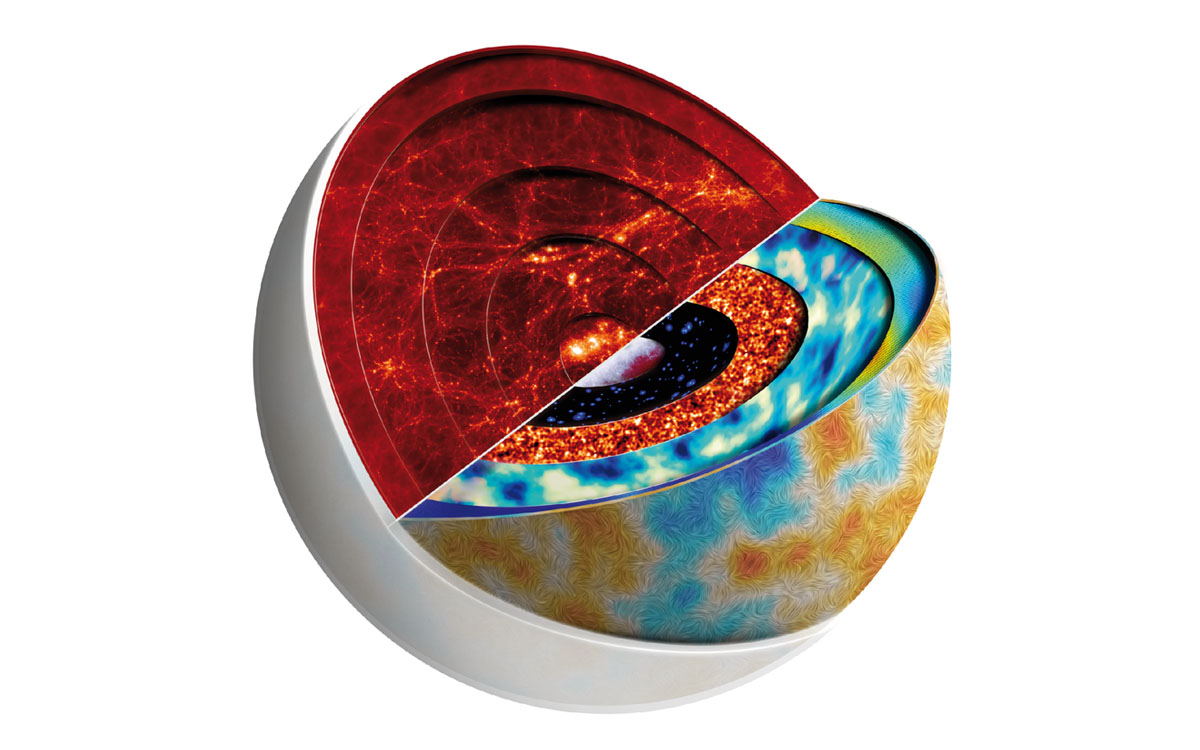roger penrose hunts for traces of other big bangs

Inflationary cosmology, which is the current model of how physics sees space and time, gets pretty tangled in how it describes the Big Bang and its immediate after-effects. All sorts of odd quantum states, asymmetries, and exotic particles had to come into existence after a violent event that carved out an ever-expanding bubble of space, started time, and hurled out vast quantities of matter out of which just over 4% survived. But while a whole lot of time and effort has been spent mining the subatomic world to confirm the mechanics of what we know as matter, what the Big Bang actually is, and what caused it, are still a mystery. After decades of trying to pin down a reliable culprit with little success, some physicists are trying to drastically simplify the universe, and others are looking at other cosmological models. Following this trend, the physics great Roger Penrose has dusted off the cyclical universe and decided to look for evidence of it in the sky. And he found it. Sort of.
Cyclical cosmology basically holds that the Big Bang is not a singular event, but that every so often, there’s an ideal set of conditions for a violent blast that carves out either a new universe, or more of the universe. In this way, you don’t necessarily need inflation to keep the universe expanding. All you need is for another Big Bang to come along and spit out some new galactic archipelagoes. But that idea leaves us with a problem. A huge and violent series of events powerful enough to shake space and time should leave traces in the CMBR. The current inflationary model is backed up by very clear observations and CMBR measurements, the vivid and well documented traces of a major event around 13.7 billion years ago. So multiple Big Bangs should’ve left multiple sources of background radiation, or disrupted the current CMBR pattern. Penrose is arguing that the latter is the case, and that previous Big Bangs left concentric circles of colder and warmer temperatures deep in the background radiation map we have today. Each of those circles should represent a complete cycle from bang to cooling to the next bang, and there’s a multitude of them scattered around the sky.
Now, with all my due respect to a physicist of such stature, the idea of concentric rings in the CMBR being the living proof of a cyclical cosmos strikes me as rather odd, and the explanation in the paper seems lacking. If a single Big Bang event can create a universe-spanning shroud of radiation, why are other events like it leaving only small concentric circles? After enough cycles, wouldn’t some of those circles start colliding or deforming from the shockwaves of other violent disruptions of space and time? Why isn’t the whole CMBR map a mess of warped belts of heat and cold? And very importantly, what is it that triggers another Big Bang? The story we get from the paper is missing a crucial piece in this regard. After a Big Bang, we have an ordered, low entropy universe before particles begin to organize, combine, fly apart, and react. As the universe ages and cools off, black holes come to dominate and swallow up most matter, releasing it when they evaporate. Then, we’re left with a cold, highly ordered universe where nothing happens and entropy is once again low. At this point, a new Big Bang occurs and the cycle starts over again. But what triggers this new event and why it kicks in just as entropy hits its second low is not explained, leaving a major plot hole in this cosmological narrative.
By contrast, while the inflationary model is often quite mum on the causes of the original Big Bang, it offers an immensely better fit to the data we have so far. While it might seem that dark matter and dark energy are only adding complexity to an already clouded picture, they’re actually the simplest explanations for what we see in deep space. When you add another exotic plane, or another exotic field, or some new Big Bangs into the mix, you’re actually vastly increasing the complexity of the cosmological model and adding volumes of ideas you’ll need to verify on top of the existing problems. Having another Big Bang might explain an abstract problem in inflationary models, but you now have to explain how two Big Bangs would interact with each other and shape the universe and everything in it. This is why unless you have compelling and irrefutable proof of something a lot stranger and more complicated than scientists already suspect, they’re loath to start adding exotic ideas to existing frameworks and try to reconcile all the inevitable conflicts in the data. And I’m afraid that most cyclical cosmologies are probably going to firmly stay in the realm of old ideas unless we see far more impressive or substantial evidence for more than just one Big Bang in the known history of the universe.
See: V. G. Gurzadyan, & R. Penrose (2010). Concentric circles in WMAP data may provide evidence of violent pre-Big-Bang activity, arXiv: 1011.3706v1





